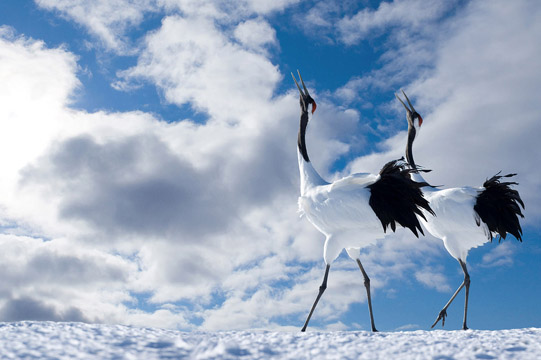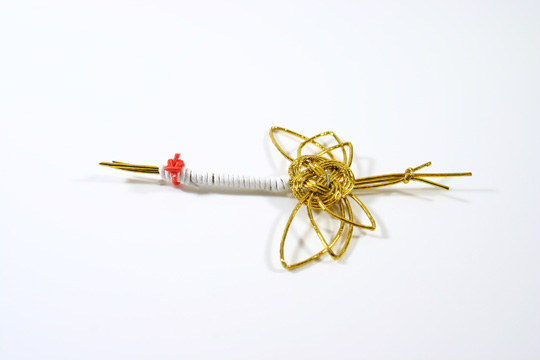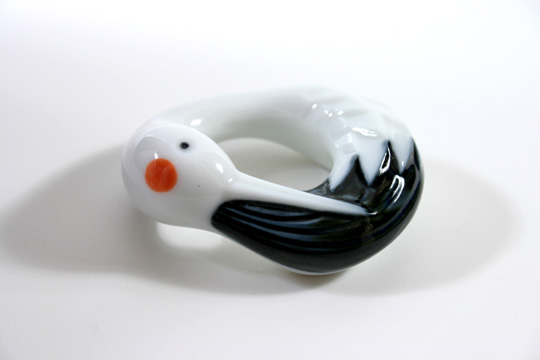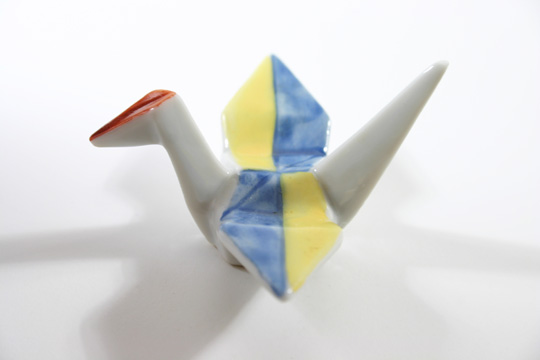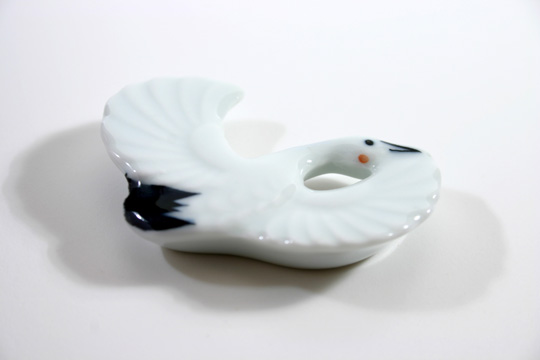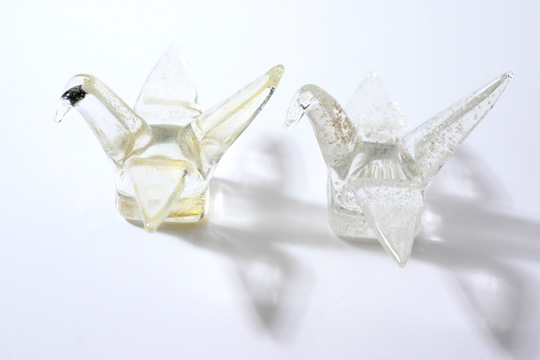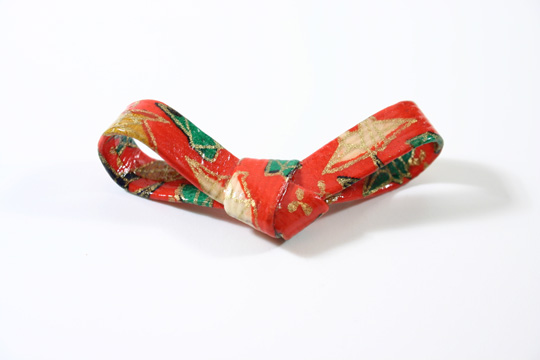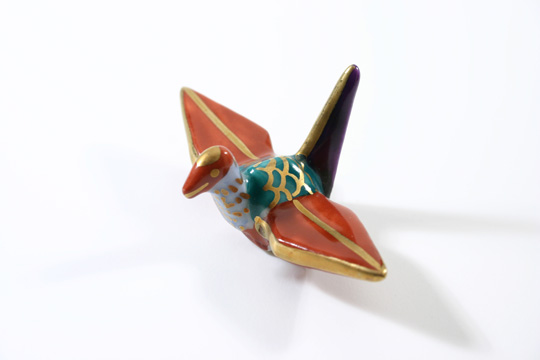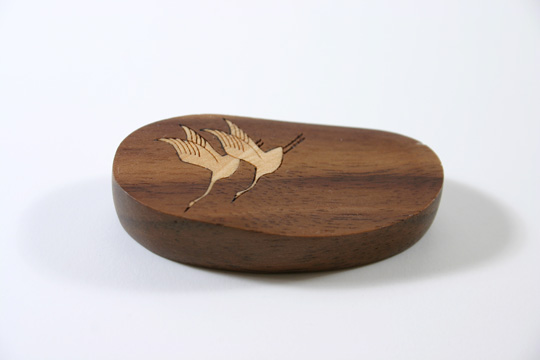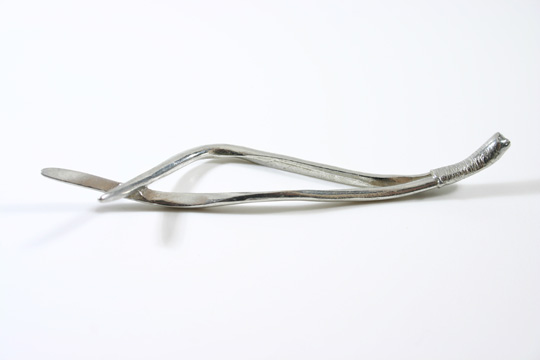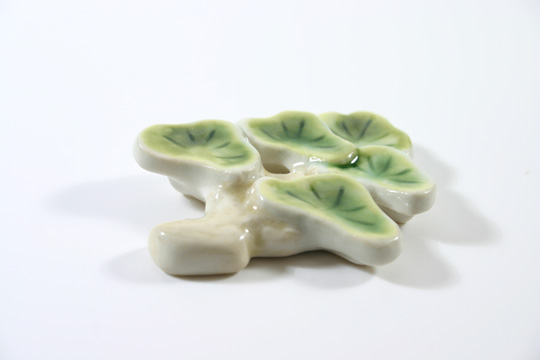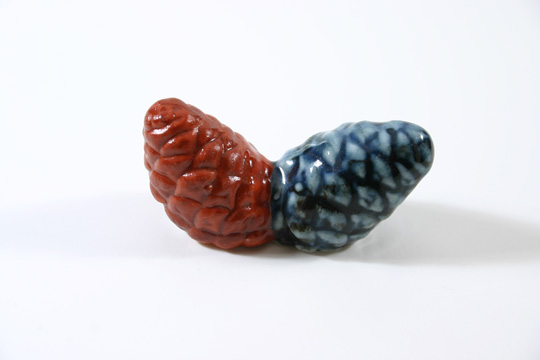
Bar, cream white with a fan baring pine branches and cranes
Origin : Japan
Made of : porcelain - potery
Classification : things / shapes
Maker : ?
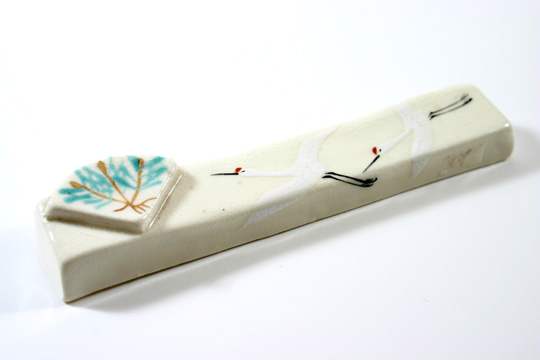
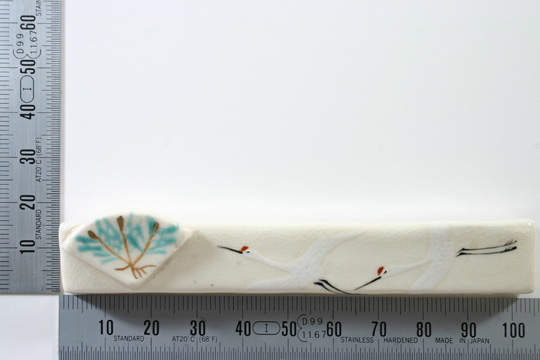
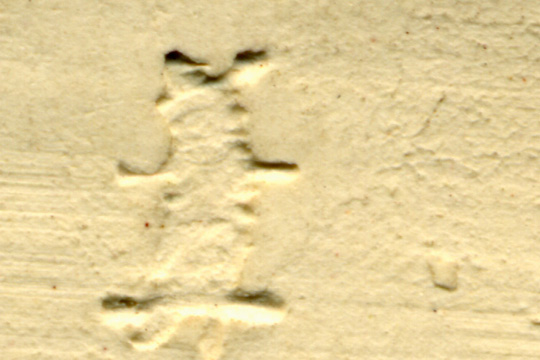
About "crane" (tancho tsuru - 丹頂鶴) :
In Japan, cranes represent longevity and good fortune. They are closely associated with Japanese New Year and wedding ceremonies (crane motifs are often found on wedding kimonos).
Cranes are found on a lot of works of art and are one of the most traditional origami figure. Japanese fold a thousand crane origamis when they want to make a special wish. Giant colourful necklaces of origami cranes are a common sight outside Japanese shrines and temples or at the Hiroshima atomic bomb memorial.
Japan has also a special type of black an white crane living especially in Hokaido (north of Japan), the red-crowned crane.
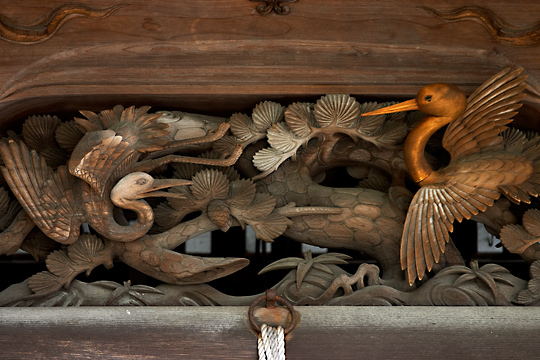
Cranes on a temple's bas-relief
About "pine Tree" (matsu - 松) :
Pine trees are prized for their practical uses and attractive appearance. Pines are used as a decorative plants in most Japanese gardens. Pine trees are also very popular for bonsais.
Green throughout the year, the pine tree symbolizes youth, longevity and a healthy and happy old age. It's a symbol of winter and New Year
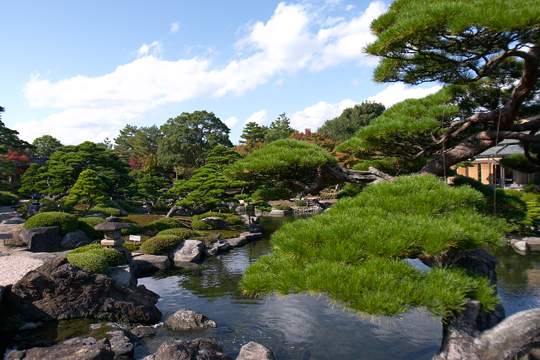
Pine trees in the Japanese garden of Daikonshima near Matzue
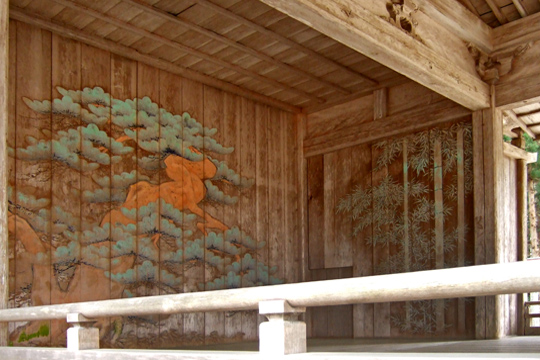
Wall painting of a pine tree at the back of a Noh theater stage in Hiraizumi
